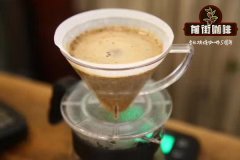Cedar King Coffee, Essex, West Motherland, King Coffee.

Professional Coffee knowledge Exchange more information about coffee beans Please note the coffee workshop (Wechat account cafe_style)
Qianjie Coffee-Esseobi Seymour King Jie Zi
Ethiopian Sidamo Lion King, the King of the Seymour.
Place of production: Ethiopia, Nippi, West Seyamoguji region
Altitude: 1800 m ~ 2000 m
Processing method: daily processing method
Species: native species of the earth
Sidamo region
The coffee flavor of Seymour is very varied. Different types of soil, micro-climate and countless native coffee species, high mountains, highlands, plateaus, valleys and plains in the producing areas, the topography is varied, and the plains are prone to fertile, well-drained volcanic soil. the depth of the soil will be nearly one meter, and the surface soil will be dark brown or brown. Growing at 4600-7200 feet above sea level in the southernmost Ethiopia Plateau (Sidamo Province), Sidamosheng is a famous boutique coffee area in southern Ethiopia. It borders Kenya and is located south of Kyrgyzstan, just south of the capital. It is usually sweet and loved by many people. Its annual output is 225000 bags per 60kg.
The flavor of coffee in Sistemo is very diverse, with different types of soil, micro-climate and countless native coffee species, high mountains, highlands, plateaus, valleys and plains in the producing area, with varied topography, and the cultivated land is rich in volcanic soil. the depth of the soil will be nearly a meter, showing that the soil is dark brown or brown. The maximum yield of the soil is that the soil fertility is maintained through the circulation of organic matter, using the withered litter of the trees or the roots of the plants as fertilizer. Therefore, the coffee produced by the city has obvious differences and characteristics.
In 2010-2012, we continued to receive a high score of CR92~94, a US power coffee evaluation website. As a result, we can take advantage of the extraordinary nature of raw beans in our region.
The Guji production area is located in the south of Yejia Xuefei, a well-known production area. In terms of administrative planning, we prefer Oromia Region → Guji Zone to regional coffee raw beans. Just as Yejia Xuefei became famous after it became famous, it became Guji Zone, a secondary production area established by Sidamo. This batch is located near the town of Dara Woreda in Sidama province. Produced by the Coffee Coffee Cafe of the Shilcho Coop Co-operative. This cooperative was founded in 1976 and is currently a member of SCFCU (Sidama Coffee FarmerCooperative Union), the cooperative alliance of Sidama province. SCFCU is the largest coffee cooperative alliance in Ethiopia, which currently has about 46 member cooperatives, making it the second largest coffee in Ethiopia.
02? processing method
The daily cooking method is the oldest and most primitive method for the processing of coffee beans, which is equivalent to the water washing method. This kind of dried coffee is also called "natural coffee" or "daily coffee". The harvested coffee is exposed directly to the sun light for the period of ripening to four weeks. For one thing, countries with a clear waiting list will use this method.
1. First of all, harvest ripe coffee fruit.
two。 Pick out the bad beans and bad beans first.
3. Roasted floating beans: pour the coffee fruit into the sink, the ripe fruit will sink to the bottom of the sink, and the immature or missing fruit will surface.
4. The ripe coffee fruit sunk at the bottom of the sink is dried by daily drying, and the moisture content is reduced from 70% to about 10-12%. The number of exercises a day is required to make sure the fruit is dry, and it needs to be repeated at night to avoid dampness.
5. Remove the outside material: it is exposed that the outside of the coffee maker has been dry after four weeks, and then use the machine to remove the outside material.
END
Important Notice :
前街咖啡 FrontStreet Coffee has moved to new addredd:
FrontStreet Coffee Address: 315,Donghua East Road,GuangZhou
Tel:020 38364473
- Prev

Kenya Ausaya Cooperative Kaguga treatment Plant Little Tomato Flavor washing AATOP
Professional coffee knowledge exchange more coffee bean information please follow the coffee workshop (Wechat official account cafe_style) front street-Kenya Asaya Cooperative AA Kenya is located in eastern Africa, the equator runs across the middle, the East African Rift Valley runs from north to south, and borders with Ethiopia, Uganda, Tanzania and other coffee producing areas, has a unique coffee growing environment, the planting area is mainly distributed in
- Next

Hawaiian Coffee Coffee Hawaiian kona Queen Coffee from Hawaii
Professional Coffee knowledge Exchange more information about coffee beans please note Coffee Workshop (Wechat account cafe_style) Front Street Coffee-Queen kona of Hawaii said that Hawaii is the only coffee producing region located in developed countries, which is certainly not high above sea level, but because of the special seaweed weather, the coffee products produced here are not low. Coffee was first made in Kam
Related
- Beginners will see the "Coffee pull flower" guide!
- What is the difference between ice blog purified milk and ordinary milk coffee?
- Why is the Philippines the largest producer of crops in Liberia?
- For coffee extraction, should the fine powder be retained?
- How does extracted espresso fill pressed powder? How much strength does it take to press the powder?
- How to make jasmine cold extract coffee? Is the jasmine + latte good?
- Will this little toy really make the coffee taste better? How does Lily Drip affect coffee extraction?
- Will the action of slapping the filter cup also affect coffee extraction?
- What's the difference between powder-to-water ratio and powder-to-liquid ratio?
- What is the Ethiopian local species? What does it have to do with Heirloom native species?

